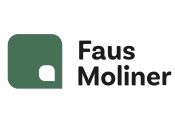New guidelines of the European Commission regarding the safety of medicinal products and medical devices
Identification of medical devices and of medicinal products subject to additional monitoring
CAPSULAS Nº 142
Regulation (EU) No 198/2013 regarding the new identification symbol that must be incorporated by medicinal products whose authorization is subject to additional monitoring was published this past March. This publication was followed, only a month later, by the Commission Recommendation of 5 April 2013, through which a unique device identification system is intended to be promoted for medical devices in the entire European Union. Due to their interest, we will briefly analyze their most relevant aspects.
Identification of medicinal products subject to special monitoring
With the aim that they may be easily identified by healthcare professionals and patients, medicinal products subject to additional monitoring for reasons of their specific safety profile –amongst which biological medicinal products, products containing a new active substance, and products for which post-authorisation data are required– shall have to be labeled with an inverted equilateral black triangle.
Affected medicinal products shall include this symbol in the summary of product characteristics and in the package leaflet by 31 December 2013, although for products authorised before 1 September 2013 an extension of this term may be granted if there is a risk that situations of shortage of supplies may be generated. On the other hand, pharmaceutical companies may also continue to supply units that were labelled and packaged before 1 January 2014, although they do not include the symbol, until stocks are exhausted.
Unique identification system for medical devices
Given that the current European regulatory framework for medical devices does not include specific provisions on the traceability of medical devices, the Commission wanted to anticipate its future regulation through recommendations that aim to avoid that manufacturers will be obliged to implement different systems for each country. These recommendations apply to all medical devices, except for devices which are custom-made or intended for clinical investigation, and in vitro diagnostic medical devices intended for performance evaluation or manufactured in health institutions.
According to the Commission, the identification must include both the device identifier (manufacturer and model) as well as the production identifier (unit of device production and level of traceability according to the risk) and, ideally, it must be submitted both in human readable and electronic format. Such information should be stored by the different agents along the distribution chain, and used in the reporting of incidents. Finally, Member States are invited to promote the use of the Extensible Markup Language (XML) as a common format for data exchange.
